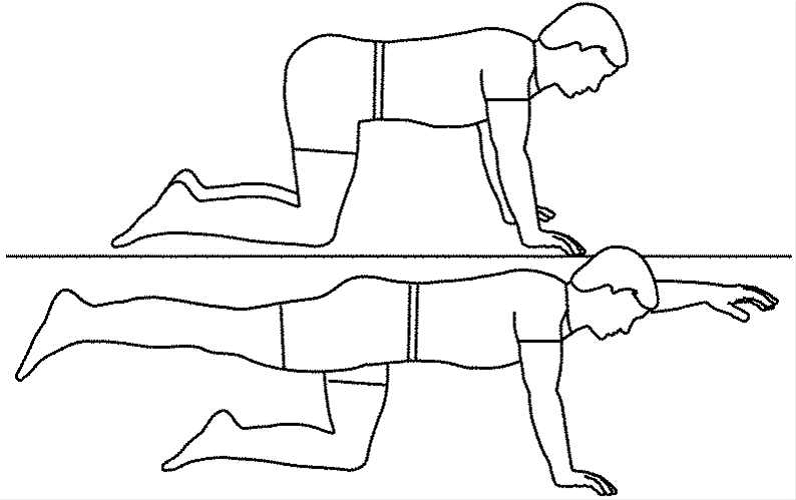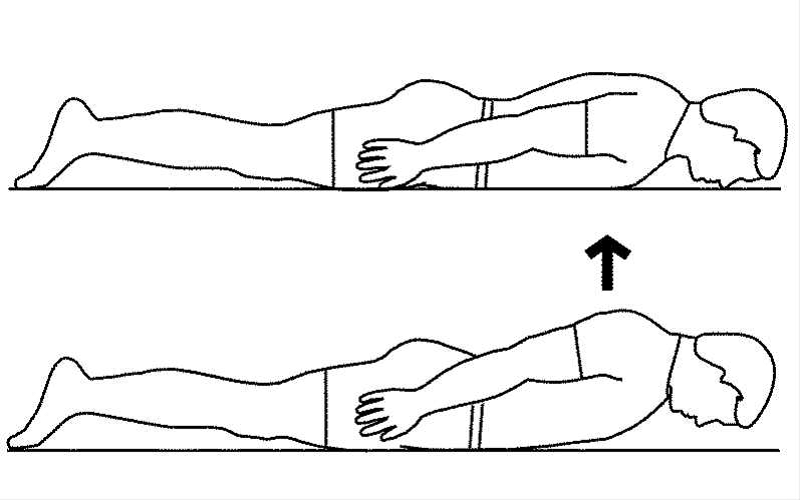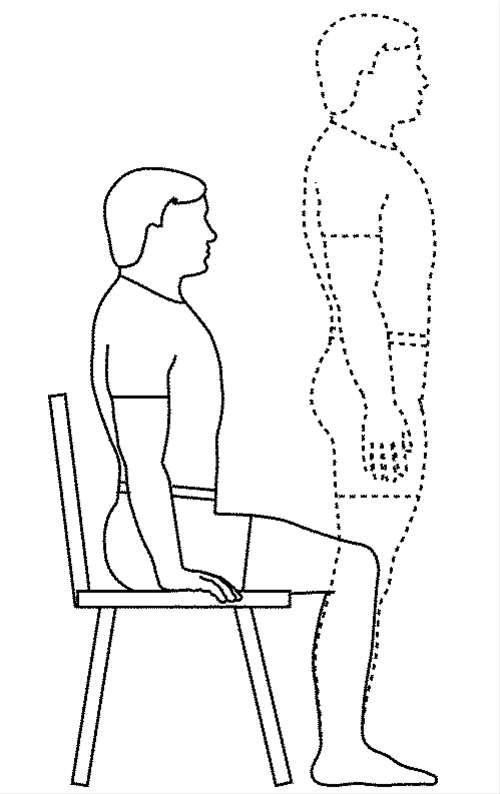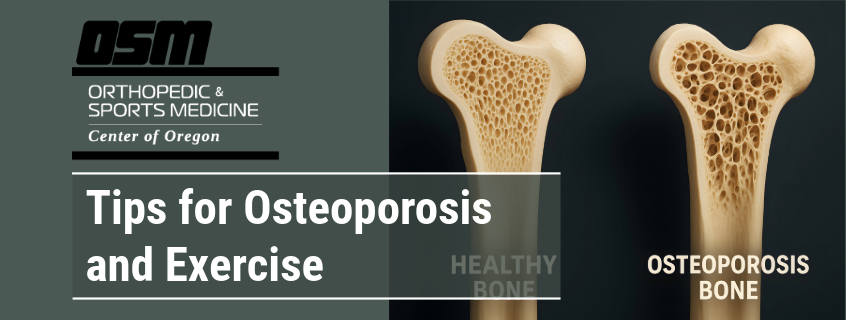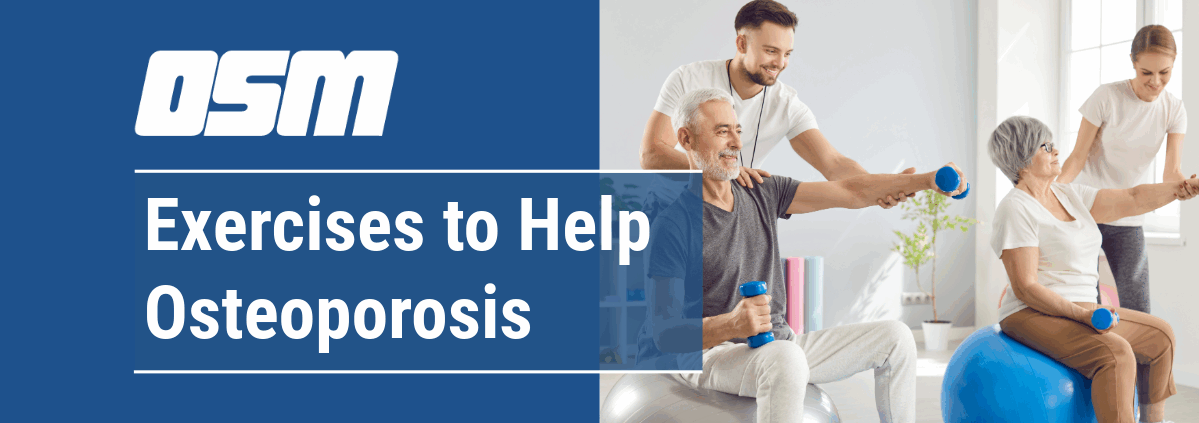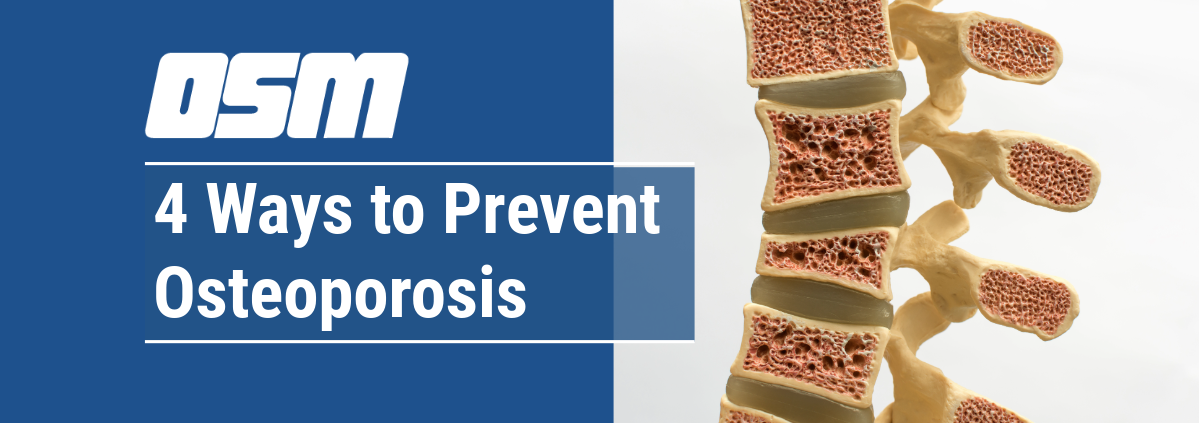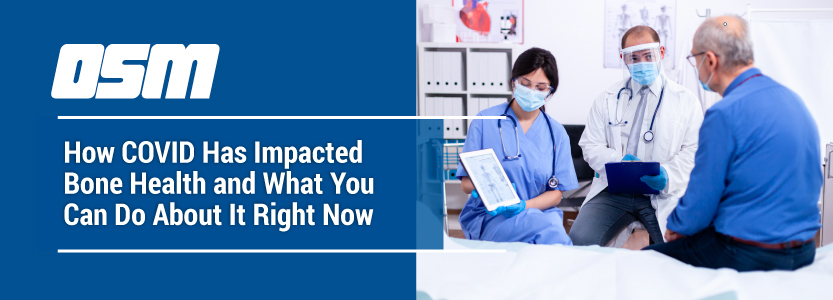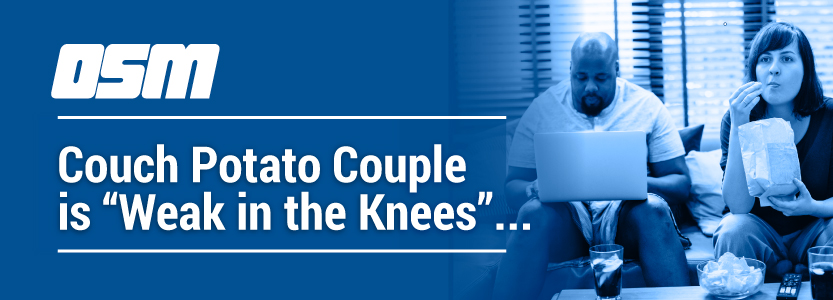Between working from home and being glued to the television watching the latest election updates, many of us are guilty of increased “couch potato” behavior lately. And we’ve all heard of the dangers of sedentary lifestyles contributing to obesity, etc., but did you know that *not* moving can actually weaken your knees and increase your chances of osteoporosis?
Continue reading for more from Noyes Knee Institute and the Journal of Public Health.
Do you spend a lot of time sitting? Maybe you work at an office where most of your time is at your desk, or maybe when you’re at home, you prefer to rest on the couch instead of being on your feet. Many people live a mostly inactive lifestyle, but they might not realize that inactivity can be the reason why they experience increased joint pain.
Learn the reasons why inactivity can hurt your knees and what you can do to change it.
Weakens Your Knees
If you live a life or limited activity, your body adapts to that lack of motion. Essentially, when you aren’t using your legs muscles, ligaments, and joints for moderate levels of activity, you are losing them. Your knees become weaker as you require less of them.
One runner found that as she took time off running to rehabilitate an injury, she could not run after completing her recovery because of knee pain. She had to complete additional physical therapy because the rest had caused her to develop a condition called chondromalacia of the patella.
Essentially, her kneecap would not follow the proper range of motion because she had developed some weakness in the joint. It’s a common condition for people who are not active. Even something as simple as going up or down the stairs can make your knees ache.
If you spend your day sitting, you also experience pain in other areas that can also aggravate the knee. Your quadriceps become tight, which exert a pulling sensation on your knees.
You can help your knees feel better by focusing on flexibility. Stretch daily, and participate in joint-stabilizing exercises like yoga. Try to be more active during the day. Stand at your desk, or take time to walk around the office a few times. Use the stairs instead of the elevator.
Increases Your Risk of Arthritis Pain
If you start to experience joint pain as a result of arthritis, your first instinct is to rest more, because walking, running, biking, or other activities cause pain. However, resting when you have knee pain is often the worst solution.
Resting will cause the muscles that give the knee support to weaken. As a result, they become less able to bear your weight, which results in greater joint pain. Reduced strength in the knee joint also translates to reduced stability, which can increase your risk for accidents and make exercising even more difficult to do safely.
If you have arthritis or if you have a history of arthritis in your family, staying active is one way you can help to prevent it from getting worse. Ask a knee specialist for exercises that are safe and helpful for strengthening your knees without causing you too much pain during workouts.
Promotes Weight Gain
A sedentary lifestyle is often why people struggle to manage their weight. Gaining weight with age is common, and spending your days seated can make that problem worse. With every extra pound, the pressure on your knees increases by about four pounds. So, just 10 pounds of extra weight means 40 pounds of pressure on your knees.
All that stress naturally means that your knees start to hurt, and they can hurt even more when you try to be active again. Make sure you intentionally choose low impact exercise as first. Try a stationary bike or a brisk walk in supportive shoes to begin. Focus on losing weight through diet control.
After you lose some weight, you can increase your physical workouts if your doctor believes they will be safe. You might try incorporating some resistance training to really give your lower body some increased strength and stability, as long as you also spend time stretching and increasing your flexibility.
Increases Risk for Osteoporosis
From the Daily Mail
Being a couch potato weakens your bones: Adults in their 60s face greater risk of fractures if they spend hours sitting down each day – but walking 10,000 steps each day helps
- The study of 214 adults was published today in the Journal of Public Health
- It is the first to show a link between a sedentary lifestyle and osteoporosis
- Participants’ hips and spines were scanned to measure their bone density
A couch potato lifestyle leads to weaker bones in later life, particularly for men, researchers have found.
Experts discovered that men spent more time on average sitting still than women and therefore had weaker bones, particularly in their lower back.
But the new findings, conducted by academics from Durham and Newcastle universities, show that even just completing 10,000 steps a day can help to keep bones strong.
The study showed that people in their sixties who spent a lot of time sitting down had weaker bones which increased their risk of developing ‘fragility’ fractures.
It is well known that weight-bearing and muscle strengthening exercises are important for building bone strength and preventing osteoporosis.
The study, published in the Journal of Public Health, is the first to show that a sedentary lifestyle in men is associated with weaker bones and osteoporosis.
More than half a million fragility fractures – where a fracture occurs from a fall at standing height or less – happen each year in the UK. It is estimated that by 2025, that number will have gone up by 27 per cent.
Dr Karen Hind, of the Department of Sport and Exercise Sciences at Durham University, said: ‘We know that excessive sedentary time can lower someone’s metabolism which can lead to being overweight and Type 2 diabetes.
‘What we now know is that being inactive is also associated with lower bone strength and an increased risk of osteoporosis.
‘Osteoporosis is a disease that affects older people but by encouraging this age group to keep active, it will help improve their bone health.’
The research team followed 214 men and women, aged 62, from Newcastle University’s Thousand Families Study.
Each participant wore a monitor for seven consecutive days which measured their physical activity and sedentary time. The number of daily steps was also recorded, and then compared with public health recommendations.
The participants’ hips and spines were scanned to measure their bone density.
Participants involved in 150 minutes of light physical activity a week had better bone strength than the more sedentary participants, according to the findings.
The men who spent more than 84 minutes per day sitting still, compared to the average of 52 minutes, had 22 per cent lower bone density in their spine.
The researchers say the impact on their bone density is similar to that of smoking, which is also a risk factor for osteoporosis.
The economic and personal costs of osteoporosis are substantial – in the UK the direct costs of fragility fractures are estimated to be £4.4billion which includes £1.1billion for social care.
The participants all lived in Newcastle-upon-Tyne, and Public Health England statistics indicate that the North East has the greatest proportion of physically inactive adults and the highest incidence of hip fractures compared to the rest of the UK.
The researchers said that the message from their findings is: stay active and reduce sedentary time.
They emphasised that the study shows that hitting the daily target of 10,000 steps and avoiding long periods of sedentary time will increase bone strength.
They say that even making daily lifestyle ‘hacks’ can make a difference – such as parking the car further away from the shopping centre or taking the stairs instead of the lift.
Dr Hind added: ‘Currently there are no specific guidelines for this age group to encourage light physical activity or to reduce sedentary time.
‘Yet, as people retire they are more likely to increase the time they spend watching television and reduce their daily step count.
‘It would be great to see initiatives that specifically target this group to increase their awareness of the importance of staying active and reducing the amount of time spent sitting still.’
Learn more about bone health
The Orthopedic & Sports Medicine Center of Oregon is an award-winning, board-certified orthopedic group located in downtown Portland Oregon. We utilize both surgical and nonsurgical means to treat musculoskeletal trauma, spine diseases, sports injuries, degenerative diseases, infections, tumors and congenital disorders.
Our mission is to return our patients back to pain-free mobility and full strength as quickly and painlessly as possible using both surgical and non-surgical orthopedic procedures.
Our expert physicians provide leading-edge, comprehensive care in the diagnosis and treatment of orthopedic conditions, including total joint replacement and sports medicine. We apply the latest state-of-the-art techniques in order to return our patients to their active lifestyle.
If you’re looking for compassionate, expert orthopedic surgeons in Portland Oregon, contact OSM today.
Phone:
503-224-8399
Address
17355 Lower Boones Ferry Rd Suite 100A
Lake Oswego, OR 97035
Hours
Monday–Friday
8:00am – 4:30pm
